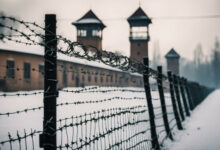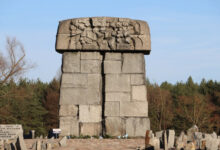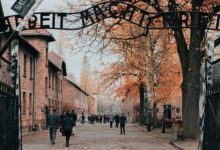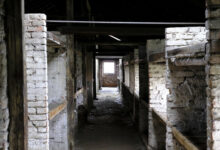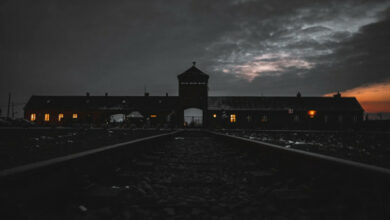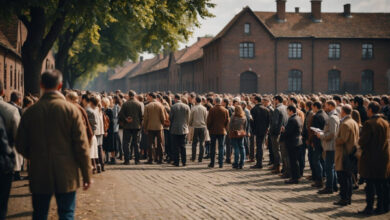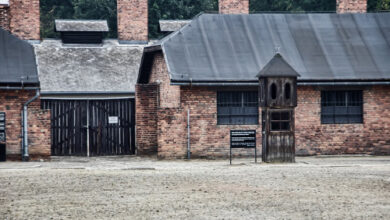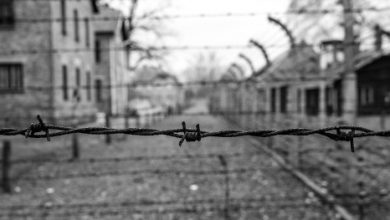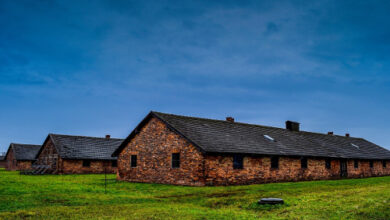Can You Take Photos at Auschwitz?
Auschwitz Photo Rules: A Guide to Taking Pictures Respectfully at the Memorial Site
Taking a trip to Auschwitz can be a powerful and emotional experience. As you walk through the remnants of the camp, you may wonder whether you can capture the historic displays with photos. It’s essential to follow the rules and respect the site’s tragic past.

You are allowed to take photos at Auschwitz for personal use, but there are some restrictions. Photography is allowed on the grounds without the use of flash or stands. However, taking photos is prohibited in certain areas, such as the hall with victims’ hair in Block 4 and the basements of Block 11. These rules ensure the preservation of artefacts and overall respect for the location.
For any commercial use of photos or film taken at Auschwitz, prior approval from the Museum Director is required. This process helps maintain the site’s dignity and honours the memory of the victims. Visiting Auschwitz is a solemn journey, and understanding the photography rules will enable you to appreciate and respect its history.
Table of Contents:
General Rules for Visiting Auschwitz
When visiting the Auschwitz-Birkenau State Museum, it is crucial to maintain a sense of solemnity and respect for the memory of the millions who suffered and lost their lives here during the Holocaust. To ensure a respectful environment, there are specific rules you must follow during your visit.
Firstly, maintain a proper Auschwitz Dress Code to show respect for the site and its victims. Avoid wearing any disrespectful or inappropriate clothing. It is essential to dress modestly and appropriately while on the grounds of the memorial.
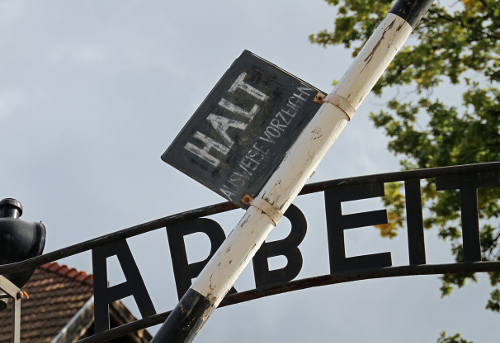
When it comes to photography, you are allowed to take pictures for personal use without the use of flash and stands. However, there are certain areas where photography and filming are strictly forbidden, such as the hall with the victims’ hair in Block 4 and the basements of Block 11. If you wish to use your photos for commercial purposes, you will need to obtain prior approval from the museum.
It is important to remember that the Auschwitz-Birkenau State Museum and all historical buildings and items on its grounds are protected by law. Therefore, you must follow the regulations set by the museum during your visit to preserve the integrity of this historical location.
While admission to the grounds is free, it is highly recommended to reserve entry cards in advance and consider visiting with a guide-educator to better understand the history behind Auschwitz. This way, you can learn from a knowledgeable source and navigate the extensive grounds more efficiently.
Specific Photography Regulations at Auschwitz
When visiting Auschwitz, you may be interested in capturing your experiences through photography or filming. It is important to be aware of and respect the specific regulations in place at the site.
You are allowed to take pictures on the grounds of the State Museum Auschwitz-Birkenau in Oświęcim for personal purposes. However, there are some restrictions to ensure that the dignity of the site is maintained. For instance, using a flash and camera stands are not permitted.
There are also specific areas where taking photos is prohibited. One such area is the hall with the hair of victims (block number 4). Additionally, you are not allowed to take pictures inside the basements of Block 11.
If you plan to use your photos or footage for commercial purposes, you are required to obtain prior approval from the Museum. Journalists, in particular, need the consent of the Museum Press Office in order to take photographs or film on the Museum grounds.

Awareness of Respectful Behaviour
While visiting Auschwitz, it is important to remember the tragic history and the immense suffering that occurred at this former Nazi concentration camp. The site serves as a reminder of the Holocaust – where millions of innocent victims lost their lives in a horrifying manner. With this in mind, your behaviour should be guided by respect and sensitivity towards the memory of the deceased and the survivors.
In recent years, social media has become a prominent aspect of our lives. Platforms like Instagram provide an opportunity to share experiences and personal perspectives. However, when visiting a site like Auschwitz, it is needed to consider the context and the emotional weight it carries. Posting photos on social media can be seen as insensitive or disrespectful, especially when the images depict a careless or frivolous attitude in a place of profound tragedy.
Visiting Auschwitz is an opportunity to learn about the past, educate yourself about the Holocaust, and pay tribute to the victims. Given this context, it is advisable to avoid taking selfies or posing inappropriately for photos. As the Auschwitz Museum has urged, it is essential to maintain respectful behaviour and remember that the site is not merely a tourist attraction, but a poignant reminder of a dark chapter in human history.
Respecting the memory and the story of the Holocaust victims should guide our actions and decisions while visiting such historically significant sites. Demonstrating a conscious awareness of the location’s purpose is integral in maintaining the dignity and reverence it deserves. In doing so, you contribute to the preservation of the memory and the lessons derived from such a harrowing experience.
Insights on Auschwitz Guided Tours
Embarking on an informative journey through Auschwitz, a guide-educator plays a significant role in enhancing your understanding of the Holocaust and the atrocities committed during World War II.
Visiting this UNESCO World Heritage site, you have the opportunity to join Auschwitz tour packages or full-day tours from Warsaw that include guided tours in Kraków or Katowice, providing you with deeper insights into the historical context of these locations.
When participating in a Auschwitz guided tour from Krakow, you will adhere to certain guidelines set by the Auschwitz Memorial. One such directive is regarding photography. While you are permitted to take photos in most areas of the memorial for personal use, flash photography and stands are prohibited. Notably, there are exceptions, such as the hall with the hair of victims (block no. 4) and the basements of Block 11, where photography is not allowed at all.
For a comprehensive experience, various options are provided for visitors with interests in guided tours. These range from general tours that last 2.5 or 3.5 hours, to one-day and two-day study tours, each tailored to different preferences and durations. Whether visiting in groups or as individual travellers, having an Auschwitz Memorial guide offers an invaluable educational experience that is both enriching and respectful of the site’s significance.
Remember, when visiting such a harrowing and historically essential site, adhering to the rules and guidelines presented by your guide is crucial. By doing so, you will enrich your understanding of the Holocaust while paying your respects to the victims in the most appropriate manner.
Auschwitz Museum Buildings and Grounds
At the Auschwitz-Birkenau State Museum, you can visit the historical grounds where the tragic events of the Holocaust unfolded. The museum grounds encompass both the Auschwitz I and Auschwitz II-Birkenau camps, with numerous buildings and structures that have been preserved or restored to display the sombre reality of this period.
As you walk through the museum grounds, you will come across iconic locations such as the Auschwitz gate with its poignant meaning and the infamous gas chambers. Each building has its own significant role and story to tell, providing a deeper understanding of the harrowing experiences faced by the prisoners.
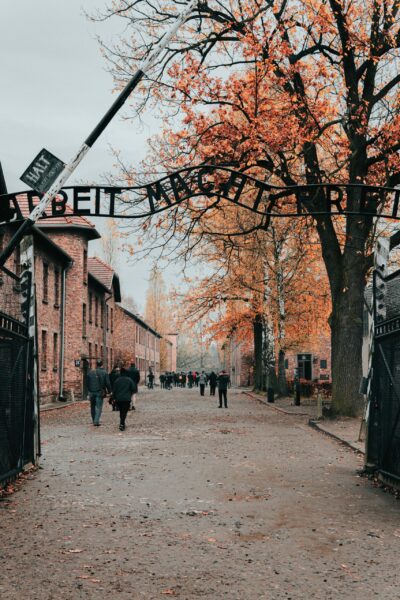
While exploring the Auschwitz Museum, you may also have the opportunity to enter the tower of the main gate at the former Auschwitz II-Birkenau camp. Access to this area is limited to groups visiting the museum with an Entry Pass for Guided Tours or an Entry Pass for Organised Groups. It is important to note that for conservation reasons, no more than 30 people may enter the tower simultaneously.
To fully appreciate the history of Auschwitz, it is recommended to visit with a guide-educator. Admission to the Auschwitz grounds is free of charge, but fees are charged for engaging a guide. Booking in advance is necessary for a smoother visiting experience.
Additional Information for Visitors
When planning your visit to Auschwitz, located in Oświęcim, it’s important to be aware of some key information to ensure a smooth and respectful experience.
The Auschwitz Museum is open for visitors with different opening hours depending on the season.
Generally, it’s open from 7:30 am, with last entry times varying between 3 pm and 6 pm. It is recommended to check their website for the most up-to-date information on opening hours.
Regarding admission, entry to the Auschwitz-Birkenau Memorial is free of charge. However, for a more educational and informative visit, you might consider booking a guided tour provided by the museum. Prices for guided tours depend on the language and the size of the group. Be sure to check their website for information on the fees for guided tours, as well as tickets to Auschwitz.
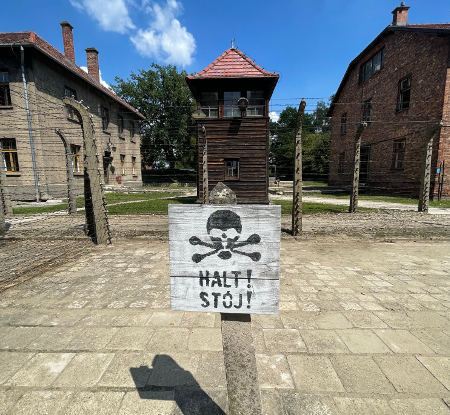
If you’re staying in Krakow, you might want to embark on a day trip to Auschwitz from Krakow, which offers a convenient option for visiting the museum without the need for organising transportation and entry cards yourself. Keep in mind that you may come across different trip prices and tour types, such as the cheapest Auschwitz tour, depending on your budget and preference.
When arriving at the museum, remember to consult their regulations on photography. In general, taking photos without flash or stands is permitted, but certain areas have restrictions, such as no photography inside block 4 or 11. If unsure, always ask a staff member for clarification.
Finally, if you need to travel between the Auschwitz Museum and Kraków, there are several transportation options available, including buses, trains, and shuttles, depending on your preferences and schedule.

By being aware of this key information, you’ll be well-prepared for a respectful and thought-provoking visit to the Auschwitz-Birkenau Memorial.
Auschwitz’s Take on Commercial Photos
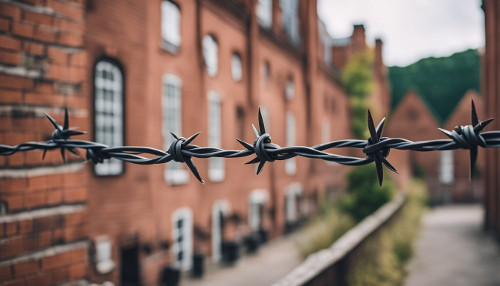
When visiting Auschwitz, you may be wondering about taking photos for personal or commercial purposes. The policy on photographing and filming at the Auschwitz-Birkenau State Museum is relatively straightforward, but there are a few notable restrictions to bear in mind.
Taking photos for non-commercial or personal use is permitted throughout most of the museum. However, there are specific areas where this is strictly prohibited, such as the hall with the hair of victims (Block 4) and the basements of Block 11. It is important to respect these regulations to preserve the dignity of those who suffered at the site.
As for commercial photography and filming, this requires prior approval from the Museum Director. To obtain permission, you must submit an application and adhere to all guidelines set forth by the museum. This policy is in place to ensure that any commercial use of images or footage is respectful, appropriate, and in line with the museum’s mission to educate and commemorate.
If you intend to use your photographs or footage for commercial purposes, it is essential to communicate your intentions clearly in your application. This will help streamline the process of securing the necessary approvals.
Read also:
Frequently Asked Questions
Are photographs allowed at Auschwitz?
Yes, photographs are allowed at Auschwitz for personal use. However, you must adhere to the rules and restrictions set by the museum.
What are the rules for taking photos at Auschwitz?
You can take photographs at Auschwitz without using a flash or stand. Also, there are certain areas, such as the hall with the hair of victims (Block no. 4) and the basements of Block 11, where taking photos or filming is strictly forbidden.
Can you take pictures inside the buildings at Auschwitz?
Taking pictures inside the buildings is generally not allowed at Auschwitz. However, you can take photos of the exterior and the surrounding grounds. Always follow the museum’s guidelines and respect the restrictions when visiting sensitive areas.
Are selfies allowed in Auschwitz?
While there is no specific rule against taking selfies at Auschwitz, it is crucial to remember the historical and human significance of the site and act respectfully. Refrain from taking selfies in sensitive areas and always be aware of the context in which you are taking photographs.
Is there a photography permit required at Auschwitz?
If you need to take photographs for commercial purposes, you must obtain prior approval from the museum. Personal use photography does not require a permit, but you must follow the guidelines outlined by Auschwitz.
Can you take pictures of all the exhibits at Auschwitz?
No, there are restrictions on taking pictures of certain exhibits, such as the hall with the hair of victims (Block no. 4) and the basements of Block 11. When visiting the museum, be sure to follow the guidelines and respect the restricted areas.

